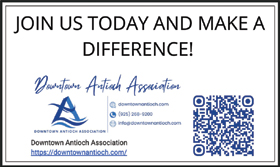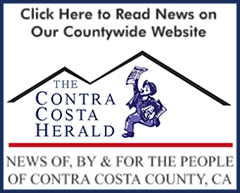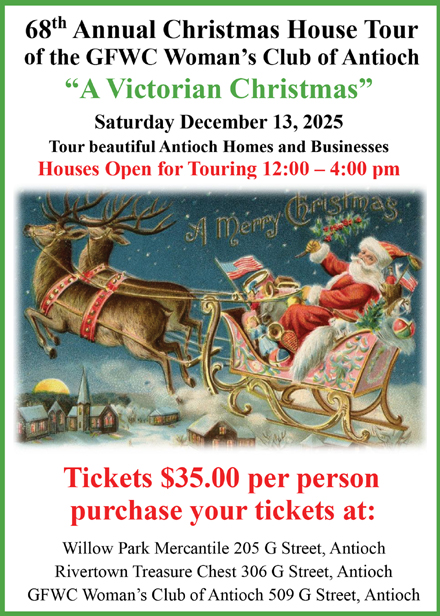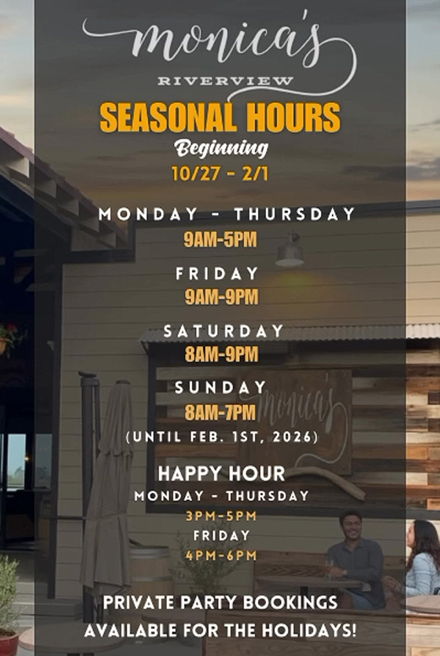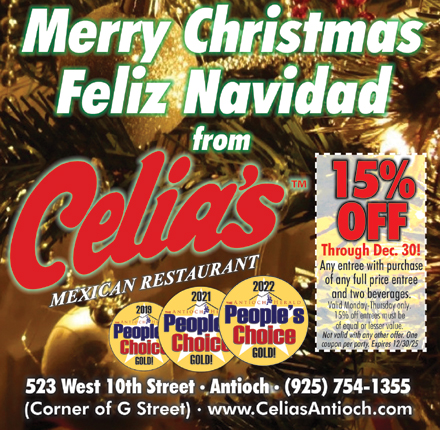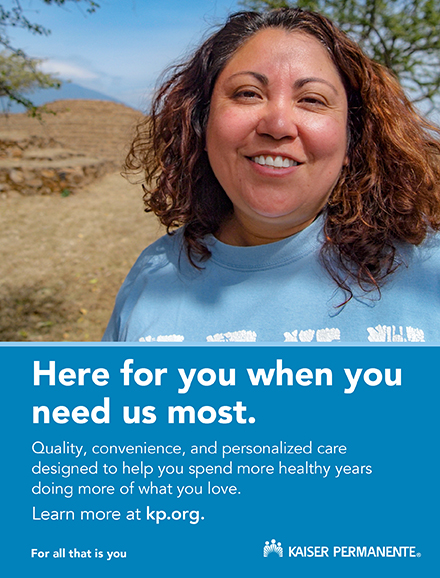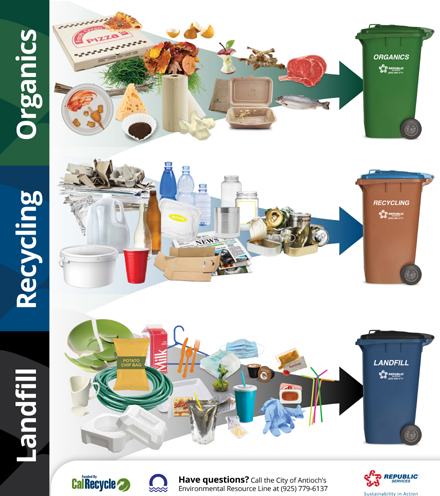Antioch Council approves spending $225K more for Amtrak Station area improvements
Friday, April 11th, 2025
That plus, new working group part of efforts to prevent closure in 2027
By Allen D. Payton
During their meeting on Tuesday, April 8, 2025, the Antioch City Council approved spending an additional $225,000 for the Amtrak Station Upgrades on a 5-0 vote. That brings the total allocated for the project to $375,000. The additional funds will be paid from Gas Tax revenue the City receives.
As previously reported, the San Joaquin Joint Powers Authority Board of Directors voted in March 2023 to decommission the Antioch-Pittsburg San Joaquins Passenger Stop, known as the Antioch Amtrak Station, due to ongoing problems dating back 15 years of homelessness, riders not paying fares, vandalism and violence, including against train personnel.
The SJJPA Board then held a meeting last September at which then-Mayor Lamar Hernandez-Thorpe offered a proposed plan to keep the station open. That required council action. The board members and executive director left open the possibility of keeping the station opened if a plan was approved and implemented to improve the area. But it was also mentioned that the City would need to meet with Amtrak staff to get their buy-in, as well as BNSF, which owns the track and right-of-way. (See related articles here and here)
According to the staff report for Item 2 on Tuesday night’s agenda, “On Oct. 22, 2024, the City Council provided direction to City Staff to improve the area surrounding the Amtrak Station…including enhanced safety and ADA accessibility compliance.” Staff developed improvements and upgrades to the station including beautification and needed structural changes at the location.
They include a transit shelter, benches, concrete paths, fencing along the northern edge of the walkway, signage, additional lighting, shrubs and trees.
During his presentation to the Council, Public Works Director Scott Buenting said, “The concept here is to provide a fare-only zone…for people that are using the Amtrak Station to be…not to be for…any other usage.”
“This is still a conceptual plan,” he added. “It is something we’d like to move forward with relatively quickly. It is something that we think will be a betterment to the area and provide us with a better chance of keeping the Amtrak Station in the future.”

Public Comments
Resident Andrew Becker said, “I was under the direct impression that Antioch was not going to be keeping its Amtrak Station open under its current model. If the City wanted to keep its Amtrak Station opened it needed to meet the requirements that they had already set forth.”
“My understanding was that there either needed to be a secondary sidetrack for the mainline or that it needed to move further down the line,” he continued. “And that the only way it could stay was when Amtrak started using future generation models that allowed them to speed up and slow down quicker.”
“So, if there were any other conversations between the rail authority, Amtrak and the City…I would be curious to know what those updates are,” Becker stated. “Because if there are…no other updates, why are we spending significant dollars and time on improving a station that we don’t have any authority of keeping.”
“If we do need to move the station to keep the Antioch-Pittsburg Station open, why are we not exploring other opportunities?” he asked.
A resident named Dean said, “I definitely don’t think we need to worry about a train station when we got broken glass all up and down Second Street and you know, spending any kind of money…to add bushes to…this area…it’s not what we really need to do. We need to revitalize the downtown area and make it a vital place for a train to stop.”
He then mentioned the homeless residents encamped nearby and damage to the lighting fixtures along the Promenade as matters that should be addressed first.
Council Questions, Discussion and Vote
District 3 Councilman Don Freitas asked, “Is there any update? I think it’s a legitimate question.”
City Manager Bessie Scott responded, “We have an Amtrak Station working group that just started to meet. One of the things that they let us know was that they could stop that stop, now or in three years when the other station (in Oakley) breaks ground.”
“Because we have to maintain it on City property, we have to be ADA-compliant so, we needed to make these upgrades,” she continued. “Also, like the gentleman was saying, there are things that are happening that diminishes our downtown businesses on the waterfront that we need to address, as well.”
“So, it isn’t just because the stop has been decommissioned,” Scott stated. “It’s because we want to keep it open for the next three years and go back to the Joint Powers association in a couple months to see if it will permanently be kept open. So, we’re making the upgrades we needed anyway, for the area as it’s City-owned property.”
District 4 Councilwoman Monica Wilson then asked Buenting if the plants “were drought-tolerant or native.”
“Yes. They will be drought-tolerant,” he replied. “They’ll be native to California.”
Freitas then said, “You asked us for some input. A lot of color in that area would be great, too…so, it brightens up that whole area,” to which District 1 Councilwoman Tamisha Torres-Walker nodded her head and said, “mmm, hmmm.”
He then asked about the Cannery Lady statue and the adjacent pathway.
Buenting responded, “That pathway would not be part of the fare-only zone. It would be to the north of that pathway.”
Torres-Walker than said with a laugh while looking at Freitas, “Thank you for saying we need more color. I’m happy to provide that up here on the council.”
She then asked Scott, “So, we can have the Amtrak shut down, now or we can do these improvements and have access to it for the next three years and potentially go back to the table?”
“That’s right. We’re going back to the table in a few months,” the city manager responded. “So, it’s a…process.”
“But if we don’t do any of this,” the councilwoman began to say before Scott cut in saying, “Yeah, we had some safety concerns, some ADA-compliance issues and findings…around there. So, we needed do it.”
Mayor Ron Bernal then said, “I would like to do anything we can to improve that area and make sure that its viable and attractive for people that are coming in and out of Antioch with the hopes, ultimately of keeping that station open. I think we should do everything to keep that station open and operable and I think this is a step in that…direction.”
District 2 Councilman Louie Rocha spoke last asking, “How long are we anticipating the use of this track before the Oakley Station could potentially get built? I’ve received a number of communications from the public asking, are we doing enough to advocate…to take steps forward to beautify that area, to make it accessible? So, I think this is a step in that direction.”
“There’s no guarantee, I realize that,” he continued. “But I think it’s the best that we can do. I think we are charged with advocating to keep that Amtrak Station open to the best of our ability. And I think it’s worth the effort.”
“Out of the 20 stations, Antioch is right in the middle as far as ridership,” Scott pointed out. “It’s about 100 a day…larger than people realize. So, it’s incumbent upon us to keep it open.”
Bernal then asked Buenting, “to make sure Amtrak is happy with the design,” to which staff agreed.
The Council than approved the design and additional expenditure for the station upgrades on a 5-0 vote.

